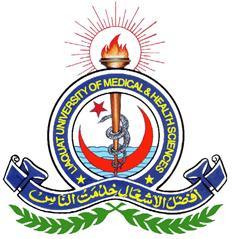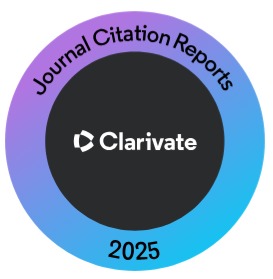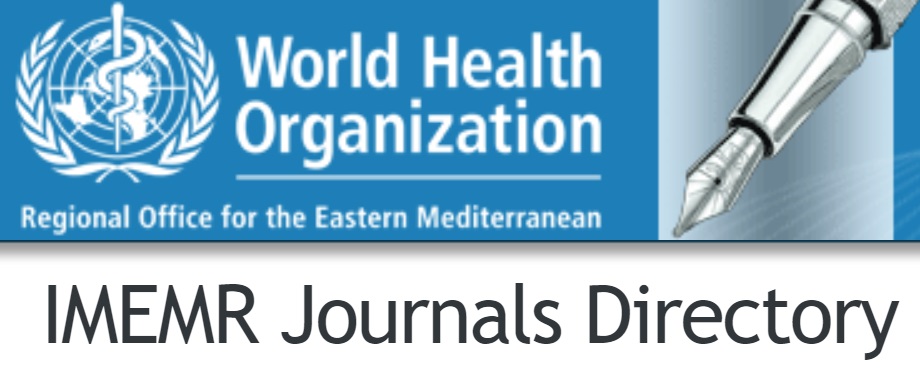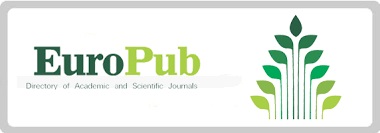Effectiveness of educational campaign in promoting knowledge and attitude of pressure ulcer among physical therapists working in tertiary care hospitals
Keywords:
Pressure Ulcers, Knowledge, Attitude, Tertiary Care Hospitals, Physical Therapist, Educational campaignAbstract
OBJECTIVE: This study aimed to evaluate the effectiveness of an educational campaign in promoting knowledge and attitudes concerning pressure ulcers among physical therapists working in tertiary care hospitals.
METHODOLOGY: This study quasi-trial was conducted from January to October 2021 in which 45 PTs who worked in Neuro-spinal units were selected by purposive sampling from five randomly selected tertiary care hospitals in Faisalabad. The participants completed a questionnaire regarding their knowledge and attitude regarding pressure ulcer prevention and treatment, and their pre-test scores were recorded. After the pre-test, the primary researcher reviewed the incorrect responses of participants to develop and offer educational materials about the prevention and care of pressure ulcers. The "Pieper Pressure Ulcer Test" was used to evaluate changes in physical therapists' knowledge and attitudes toward pressure ulcer. SPSS 21 was used for the data analysis.
RESULTS: The educational campaign had a significant effect on the knowledge and attitudes of PTs, with the mean of the pre-test true response of 31.65, the mean of the post-true response of 39.00, and the mean of the pre and post-incorrect response of 8.19, and 4.62 and don't know answers of 5.04, and 1.38, respectively. Based on one sample t-test, pre-true responses showed a 95% CI difference between 28.99 to 35.53 with a significant p-value <.001 and post-true responses showed 36.63 to 41.36 with a significant p-value <.001.
CONCLUSION: This study concluded that the educational campaign improved physical therapists' knowledge and attitudes regarding pressure ulcers.
References
Gould LJ, Bohn G, Bryant R, Paine T, Couch K, Cowan L et al. Pressure ulcer summit 2018: An interdisciplinary approach to improve our understanding of the risk of pressure?induced tissue damage. Wound Repair and Regeneration. 2019; 27(5): 497-508.
Kottner J, Black J, Call E, Gefen A, Santamaria N. Microclimate: a critical review in the context of pressure ulcer prevention. Clinical Biomechanics. 2018; 59: 62-70.
Wu X, Li Z, Cao J, Jiao J, Wang Y, Liu G et al. The association between major complications of immobility during hospitalization and quality of life among bedridden patients: a 3 month prospective multi-center study. PLoS One. 2018; 13(10): e0205729.
Arshad N, Shabbir M, ur Rehman K, Naeem M, Sadiq MA, Attiq N et al. Pressure Ulcer: Educational campaign in promoting knowledge and attitude across health professionals. 2020.
Anthony D, Alosoumi D, Safari R. Prevalence of pressure ulcers in long-term care: a global review. Journal of wound care. 2019; 28(11): 702-9.
Gyasi E, Chidochashe Gokova G. The Impact of Pressure Ulcers on the Quality of Life of Patients. 2021.
Jaul E, Barron J, Rosenzweig JP, Menczel J. An overview of co-morbidities and the development of pressure ulcers among older adults. BMC Geriatrics. 2018; 18(1): 1-11.
Asif T, Yousaf A, Khan AQ, Rafi S, Zaman R, Tariq A. Knowledge and Attitudes of Physical Therapists towards Pressure Ulcers in Different Hospitals of Multan City, Pakistan. J Riphah College Rehabil Sci. 2022; 10(01).
Kaddourah B, Abu-Shaheen AK, Al-Tannir M. Knowledge and attitudes of health professionals towards pressure ulcers at a rehabilitation hospital: a cross-sectional study. BMC nursing. 2016; 15(1): 1-6.
Faul F, Erdfelder E, Lang A-G, Buchner A. G* Power 3: A flexible statistical power analysis program for the social, behavioral, and biomedical sciences. Behav Res Methods. 2007; 39(2): 175-91.
Pieper B, Zulkowski K. The Pieper-Zulkowski pressure ulcer knowledge test. Advances in skin & wound care. 2014; 27(9): 413-20.
Gorecki C, Brown JM, Nelson EA, Briggs M, Schoonhoven L, Dealey C, et al. Impact of pressure ulcers on quality of life in older patients: a systematic review. J Am Geriatrics Society. 2009; 57(7): 1175-83.
Torres S, Labonté R, Spitzer DL, Andrew C, Amaratunga C. Improving health equity: the promising role of community health workers in Canada. Healthcare Policy. 2014; 10(1): 73.
Dalvand S, Ebadi A, Gheshlagh RG. Nurses' knowledge on pressure injury prevention: a systematic review and meta-analysis based on the Pressure Ulcer Knowledge Assessment Tool. Cli Cosmetic Invest Dermatol. 2018; 11: 613-20.
Ebi WE, Hirko GF, Mijena DA. Nurses’ knowledge to pressure ulcer prevention in public hospitals in Wollega: a cross-sectional study design. BMC Nursing. 2019; 18(1): 1-12.
Pieper B, Mott M. Nurses' knowledge of pressure ulcer prevention, staging, and description. Advances in Wound Care. 1995; 8(3): 34, 8, 40 passim-34, 8, 40 passim.
Etafa W, Argaw Z, Gemechu E, Melese B. Nurses’ attitude and perceived barriers to pressure ulcer prevention. BMC nursing. 2018; 17(1): 1-8.
Mervis JS, Phillips TJ. Pressure ulcers: Prevention and management. J Am Acad Dermatol. 2019; 81(4): 893-902.
Mervis JS, Phillips TJ. Pressure ulcers: Pathophysiology, epidemiology, risk factors, and presentation. J Am Acad Dermatol. 2019; 81(4): 881-90.
Gaspar S, Botelho Guedes F, Vitoriano Budri AM, Ferreira C, Gaspar de Matos M. Hospital?acquired pressure ulcers prevention: What is needed for patient safety? Scand J Caring Sci. 2022; 36(4): 978-87.
Mockridge J, Anthony D. Nurses' knowledge about pressure sore treatment and healing. Nurs Stand. 1999; 13(29): 66, 9-72.
Mockridge J, Denis A. Nurses' knowledge about pressure sore treatment and healing. Nursing Standard (through 2013). 1999; 13(29): 66.
Islam S. Nurses’ knowledge, attitude, and practice regarding pressure ulcer prevention for hospitalized patients at Rajshahi medical college hospital in Bangladesh: Prince of Songkla University; 2010.
Fulbrook P, Lawrence P, Miles S. Australian nurses' knowledge of pressure injury prevention and management: a cross-sectional survey. Journal of Wound, Ostomy, and Continence Nursing. 2019; 46(2): 106.
Black J, Baharestani MM, Cuddigan J, Dorner B, Edsberg L, Langemo D et al. National Pressure Ulcer Advisory Panel's updated pressure ulcer staging system. Advances in skin & wound care. 2007; 20(5): 269-74.
Clarkson P, Worsley PR, Schoonhoven L, Bader DL. An interprofessional approach to pressure ulcer prevention: a knowledge and attitudes evaluation. J Multidiscipl Healthcare. 2019; 12: 377.
Angmorterh SK, England A, Webb J, Szczepura K, Stephens M, Anaman-Torgbor J et al. An investigation of pressure ulcer risk, comfort, and pain in medical imaging. J Med Imag Radiat Sci. 2019; 50(1): 43-52.
Kosuge M, Ishihara Y, Takahashi M. Body pressure prediction for pressure ulcer prevention in a bed head elevation operation. Advanced Robotics. 2021; 35(3-4): 181-93.
Martin D, Albensi L, Van Haute S, Froese M, Montgomery M, Lam M et al. Healthy skin wins: a glowing pressure ulcer prevention program that can guide evidence?based practice. Worldviews on Evidence?Based Nursing. 2017; 14(6): 473-83.
Launiala A. How much can a KAP survey tell us about people's knowledge, attitudes and practices? Some observations from medical anthropology research on malaria in pregnancy in Malawi. Anthropology Matters. 2009; 11(1).
Athlin E, Idvall E, Jernfält M, Johansson I. Factors of importance to the development of pressure ulcers in the care trajectory: perceptions of hospital and community care nurses. Journal of clinical nursing. 2010; 19(15?16): 2252-8.
Zeb A, Ilyas SM, Kashif M, Kompal R, Darain H, Bahadar S. Knowledge and attitudes on pressure ulcer prevention among nurses working in neurological departments in tertiary care hospitals of Peshawar: a multicenter study. Annals of Allied Health Sciences. 2015; 1(2): 49-53.
Cullen M, Cox F. Developing a wound management orientation program using evidence-based guidelines. Home Health Care Management & Practice. 2005; 17(4): 308-315.
Downloads
Published
How to Cite
Issue
Section
License
Copyright (c) 2023 Journal of Liaquat University of Medical & Health Sciences

This work is licensed under a Creative Commons Attribution-NonCommercial-ShareAlike 4.0 International License.
Submission of a manuscript to the journal implies that all authors have read and agreed to the content of the undertaking form or the Terms and Conditions.
When an article is accepted for publication, the author(s) retain the copyright and are required to grant the publisher the right of first publication and other non-exclusive publishing rights to JLUMHS.
Articles published in the Journal of Liaquat University of Medical & health sciences are open access articles under a Creative Commons Attribution-Noncommercial - Share Alike 4.0 License. This license permits use, distribution and reproduction in any medium; provided the original work is properly cited and initial publication in this journal. This is in accordance with the BOAI definition of open access. In addition to that users are allowed to remix, tweak and build upon the work non-commercially as long as appropriate credit is given and the new creations are licensed under the identical terms. Or, in certain cases it can be stated that all articles and content there in are published under creative commons license unless stated otherwise.























